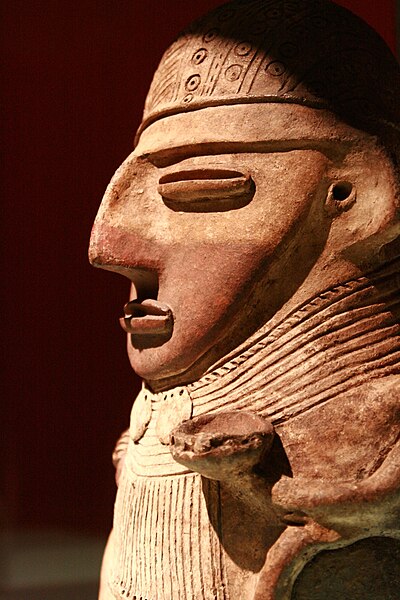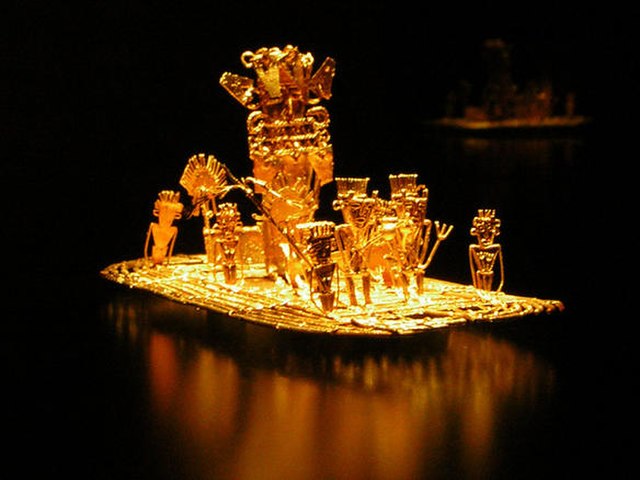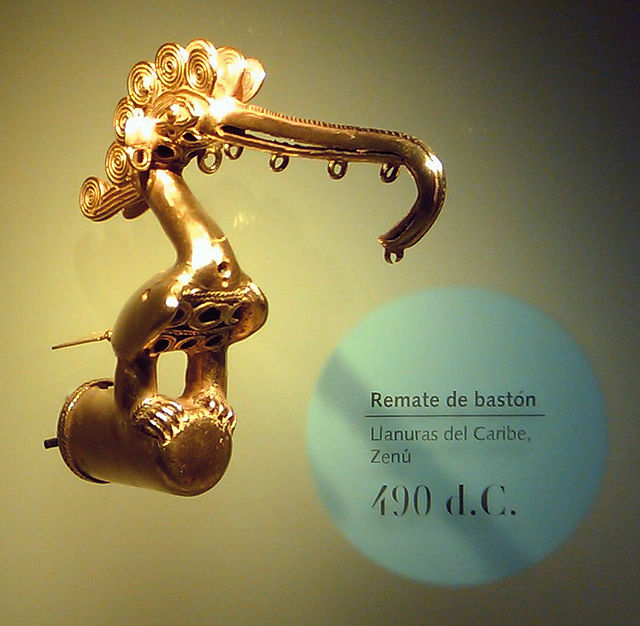The Muisca are an indigenous people and culture of the Altiplano Cundiboyacense, Colombia, that formed the Muisca Confederation before the Spanish conquest. The people spoke Muysccubun, a language of the Chibchan language family, also called Muysca and Mosca. They were encountered by conquistadors dispatched by the Spanish Empire in 1537 at the time of the conquest. Subgroupings of the Muisca were mostly identified by their allegiances to three great rulers: the hoa, centered in Hunza, ruling a territory roughly covering modern southern and northeastern Boyacá and southern Santander; the psihipqua, centered in Muyquytá and encompassing most of modern Cundinamarca, the western Llanos; and the iraca, religious ruler of Suamox and modern northeastern Boyacá and southwestern Santander.
Muisca raft (1200–1500 CE) representation of the initiation of the new zipa at the lake of Guatavita
View of the Eastern Ranges of the Colombian Andes Lake Tota is clearly visible
Petroglyphs of El Abra (~11,000 BCE)
A Muiscan ceramic figure.
Indigenous peoples in Colombia
Indigenous peoples of Colombia are the ethnic groups who have inhabited Colombia since before the Spanish colonization of Colombia, in the early 16th century.
Arhuaco Amerindians in the Sierra Nevada de Santa Marta Mountains.
The zipa used to cover his body in gold and, from his Muisca raft, he offered treasures to the Guatavita goddess in the middle of the sacred lake. This old Muisca tradition became the origin of the El Dorado legend.
A lowland Zenú cast-gold bird ornament that served as a staff head, dated 490 CE. This culture used alloys with a high gold content. The crest of the bird consists of the typical Zenú semi-filigree. Regular filigree is braided wire, but the Zenú cast theirs.
Tairona figure pendants in gold.








